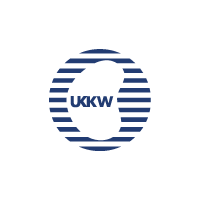Top Tips for Poster Moderators
Please see below for important information on preparing for UK Kidney Week 2024.
- Timekeeping
- Managing questions
- Judging best poster
- The secretariat will send information about the posters, format, and time limits prior to the session. Poster presentation durations will vary by session.
- Review all posters prior to the event. Prepare one key question for each poster to ensure that every presenter gets meaningful engagement, even if there are no audience questions.
- Create a schedule for with start and end times for each presentation to ensure equal time for all speakers. Account for transitions between posters when timekeeping.
- Contact your co-moderator early to discuss and align your approach to dividing tasks such as timekeeping and handling Q&A. Discuss criteria for judging poster quality and devise a scoring system to reach consensus on the best poster award.
- Check your email regularly for any important communications before the session.
- There are no formal criteria for scoring posters.
- We recommend developing criteria and creating a scoring sheet for your session to simplify the judging process and improve consistency and transparency.
Example scoring sheet:
Each row is given a score from 1 (poor) to 5 (excellent) and the sum of these determines the overall score for the poster.
| Criteria
|
Score
|
| Scientific merit of the research: Originality, significance, and rigor. | |
| Clarity and organisation: Communication of the research (uncluttered, logical flow, clear headings, concise text, structured layout). | |
| Data presentation: Clarity and accuracy of figures, tables, and charts. | |
| Presenter's knowledge and engagement: Explanation of content and engagement during Q&A. | |
| Contribution, impact, and relevance: Potential impact on the field in terms of advancements, practical applications, and implications for future research. |
- Introduce yourself to the presenters and make them feel welcome.
- Inform presenters about their time limits and how you will keep time.
- Example: Hold up 2 fingers for 2 minutes left, 1 finger for 1 minute left. When time is up, politely thank the presenter and transition to the next poster.
- Remind presenters that this is a networking opportunity, and they can follow up with audience members if a question requires further discussion.
- Have a smartphone or watch ready for keeping time.
- Begin the session promptly to respect attendees’ time.
- Give a brief introduction and promptly start the presentations.
- Establish ground rules for Q&A, including format and time limits for questions and answers. Communicate that the goal of the Q&A is to give as many people as possible the opportunity to ask questions.
- Encourage diverse participation by fostering an inclusive and welcoming environment. This can help to put audience members who may be nervous about asking questions at ease. You can do this by specifically inviting questions from students and early-career researchers, from underrepresented groups, and from across the many professions represented at the conference.
- Keep track of time on a watch or smartphone.
- Use the timekeeping system communicated to the presenters.
- Ensure all presenters have a fair opportunity for questions by being mindful of the allocated time for each presentation and the overall session.
- Help presenters and the audience feel comfortable and stimulate discussion during the Q&A.
- If there are more questions than time allows, ask the presenter to collect and prioritise several.
- If there are no audience questions, ask your prepared question.
- If one person dominates the Q&A, courteously move forward: "We could spend a lot of time on that, but we want to hear from more people..."
- Prioritize questions from those who haven't yet spoken to ensure diverse voices are heard.
- Conclude on a positive note by thanking presenters and the audience for their participation and enthusiasm.
